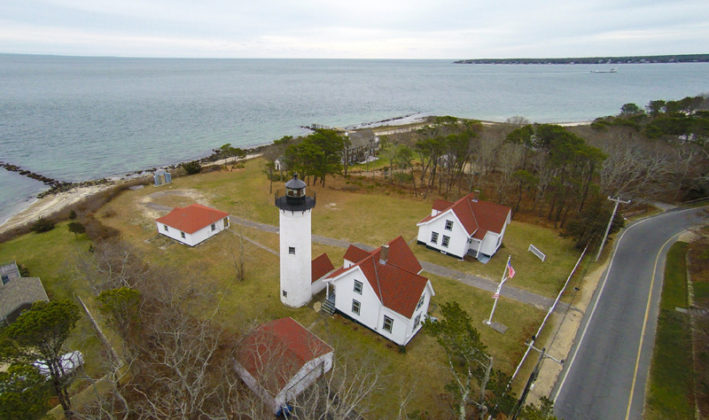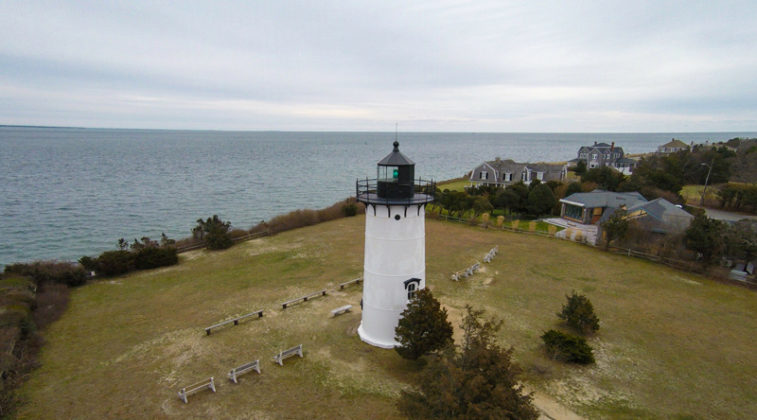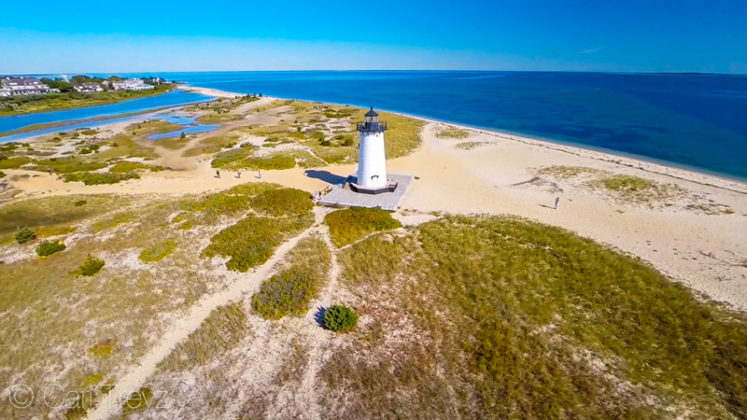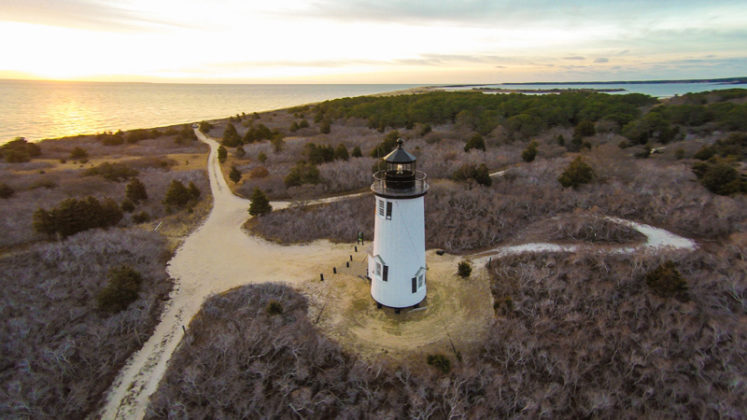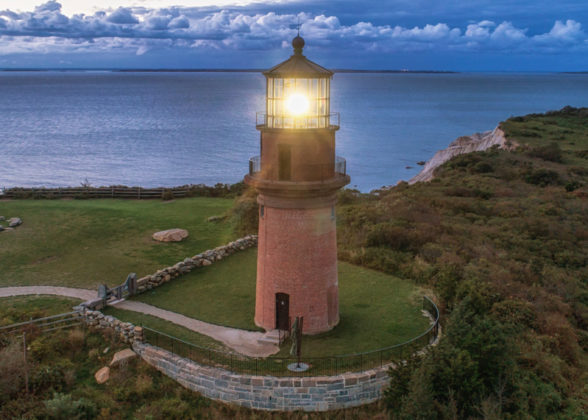Beacons on hilltops have guided mariners to safe harbor since the dawn of recorded history, and when Martha’s Vineyard was an important port for whale ships and other seafarers, lighthouses showed the way safely around shoals and rocks. These days, everyone’s phone has a GPS and most maritime navigation relies on newer technology, but computers can fail, batteries can run out, and when that happens lighthouses are still there.
Each of the Vineyard’s lighthouses has a unique story, and while only two (or possibly three) are currently open to visitors, the closed lighthouses are clearly visible from the road, and, of course, from the water.
When you arrive here by ferry, you pass the West Chop Lighthouse on the way into Vineyard Haven. This is the only one of the Island’s lighthouses that’s never open to visitors — it’s still owned by the U.S. Coast Guard, and the houses beside it house Coastguardsmen and their families. The light went into service in 1817, to warn ships away from the Middle Ground shoals and around the point. The original tower was made of stone and lime mortar, which didn’t hold up well over time. It was replaced by the current brick tower in 1891.
On the other side of Vineyard Haven’s outer harbor is East Chop, the Island’s newest lighthouse. You’ll see it on the way to (or from) Oak Bluffs by water. The original wood tower was built in 1869, but it burned down two years later and was replaced with a cast-iron lighthouse. Both the East Chop and Edgartown Harbor lighthouses are made of cast-iron plates, bolted together. Cast iron is lighter than brick, and fairly easy to move and put together. It’s also quite durable, even in the salt air, especially when the paint is kept up. This year, the East Chop Lighthouse is closed for lead abatement work, but the Martha’s Vineyard Museum, which manages it, expects that it will be open again in 2023. In the meantime, you can walk by it along East Chop Drive. Up-to-date information about visiting it can be found at mvmuseum.org/visit/east-chop.
The Edgartown Harbor light once stood on top of a lighthouse keeper’s house, built on piers over the water. The lighthouse’s position hasn’t moved, but the shoreline has. While much of the Vineyard’s coastline is eroding, and other lighthouses have to be moved back from the edge of cliffs, the area around the Edgartown Lighthouse is gaining ground. Where there was once a narrow causeway running out to the lighthouse, there’s now a solid stretch of land, and a wide beach around the lighthouse. The plinth that the lighthouse stands on is also noteworthy. In 2001, the M.V. Museum created the Children’s Memorial as a place to memorialize children who have died. Families come there to visit memorial stones and grieve, alongside the people who come to visit the lighthouse or just enjoy the beach. Admission to the lighthouse is $5 for adults, and it will be open weekends through Oct. 10, from 10 am to 4 pm. For hours, check mvmuseum.org/visit/edgartown.
Cape Pogue is a long, low sweep of sand at the north of Chappaquiddick Island. The original lighthouse in this remote spot was built in 1801, and the current wood tower was built in 1893. It has been moved back several times to keep it on solid ground as acres and acres of sand wash away in the waves, adding to the shallow sea floor around the cape. When there were lighthouse keepers in residence here they were sometimes called on to help ships that had run aground. It’s the Island’s most remote beacon, and is not open to visitors as of this writing. However, the Trustees of Reservations do sometimes run jeep tours from Mytoi Gardens, and if you can catch one it’s well worth a visit.
The final lighthouse in this tour is the Island’s oldest and most famous. The Gay Head Lighthouse stands on the Aquinnah Cliffs. The first lighthouse here was built in 1799 to warn ships away from the Devil’s Bridge shoal. Its warning wasn’t enough to save the City of Columbus, which sank there in January of 1884, leaving only 22 survivors and over 100 lost. The tower itself, built of brick, dates back to 1856, and the beacon that once shone here was a first-order Fresnel lens, now on display at the M.V. Museum in Vineyard Haven. In 2015, the lighthouse was moved back from the Cliffs again, an engineering feat that was the subject of a PBS documentary. You can visit until mid-October, Friday through Monday, between 10 am and 4 pm. Admission is $6.
For those who enjoy learning about the history of lighthouses, there’s a wealth of information locally and online, gathered by lighthouse enthusiasts. Some of these fans of lighthouses carry a “passport” to be stamped each time they visit a new lighthouse — you can get your own from The United States Lighthouse Society, and you might find yourself drawn into the world of lighthouse lore. Although the land and buildings associated with the Vineyard’s lighthouses are mostly owned by various nonprofit organizations, the lights themselves are still maintained and operated by the Coast Guard from its Woods Hole station. Along with buoys and beacons, lighthouses are part of a network of aids to navigation that stretches along the whole seacoast.


